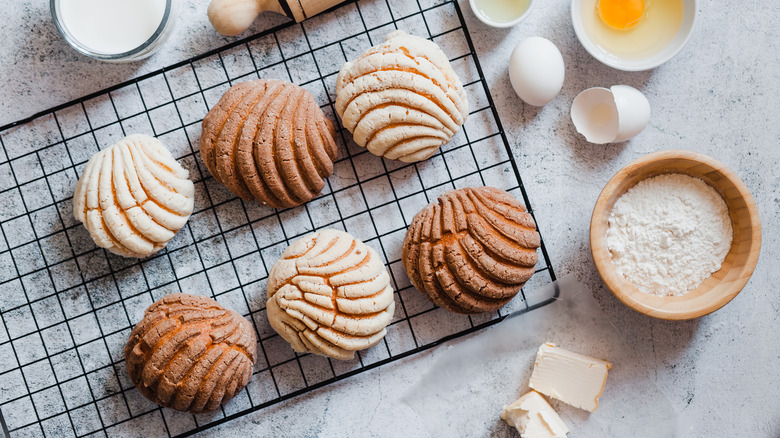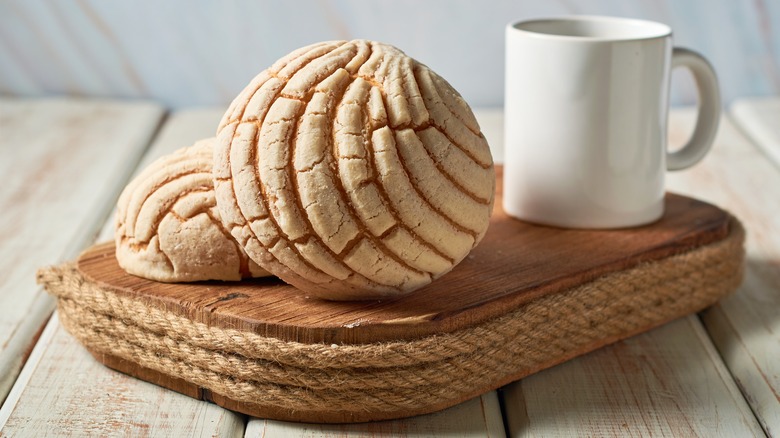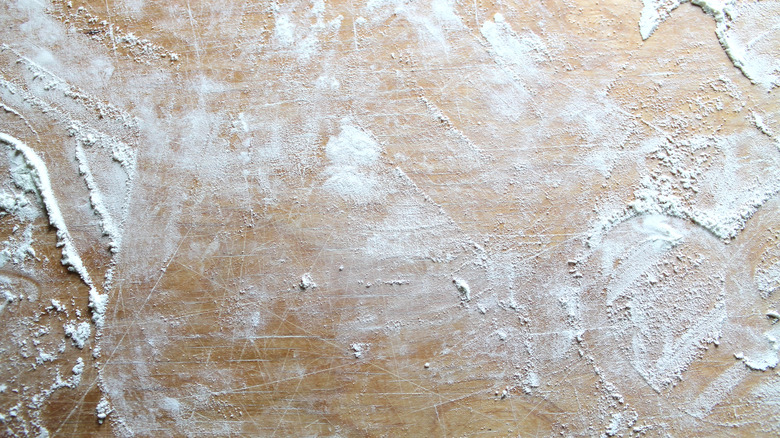The Very First Step You Need For Crispy, Fluffy Conchas At Home
Stepping into a Mexican panaderia is a spiritual experience for any pastry lover. The aroma of pan dulce likely paired with a lingering scent of coffee is the warmest, coziest break from reality. Rows of baked goods — filled with pastries varying in sizes, shapes, and colors — display the best of Mexican pastry arts. But none is more quintessential and popular than the concha.
Mexico's national sweet bread, concha is a type of sweet roll topped with a cookie crust. Conchas — the Spanish word for shells — are named for their likeness to a seashell, taken from the iconic colorful stripes that rest on top of the bread. To make conchas, you'll need to brush up on bread-making basics, going a little further to get the streusel topping just right and working the dough to perfection. Unlike standard bread-making, the most crucial first step to achieving crispy, fluffy conchas is starting with an unfloured surface.
What conchas are made of
Concha can be broken up into two parts: the soft, yeasted bread and the colorful cookie topping. While the bread itself is traditionally unflavored, the topping can take on any flavor imaginable. The most essential element to any concha, this topping is traditionally made with flour, sugar, and either butter, shortening, or margarine. When fixed on top of the dough, scores are made to achieve the familiar seashell pattern during baking.
According to Eater, all conchas are made from an enriched, yeasted dough similar to brioche or challah. Making the dough consists of a typical breadmaking approach — mixing and kneading the dough — but the approach varies in the time needed for the dough to rise, which can be several hours or overnight. After the dough rises, it is then cut and shaped. The makeup of this dough is key to understanding why an unfloured surface is crucial for a perfect concha.
An unfloured surface is key to crispy, fluffy conchas
It might be second nature to sprinkle a surface or bowls with flour while creating any dough, but this very action can ruin conchas. According to Epicurious, it's best to roll the concha dough balls on an unfloured work surface as extra flour could dry them out. And King Arthur Baking Company agrees, advising to resist the urge to add more flour as the dough won't interact with the flour in the same way a traditional bread dough might.
Keeping your surface free of flour will help you to achieve perfectly crispy and fluffy conchas. It's really that simple. Enjoy as the perfect breakfast treat or experiment by using conchas in place of your typical sandwich bread. Break a piece off and dip it into coffee, or eat with sour cream and beans — in its simplicity, conchas shine. For a sweet twist on conchas, try making Abuelita concha.


